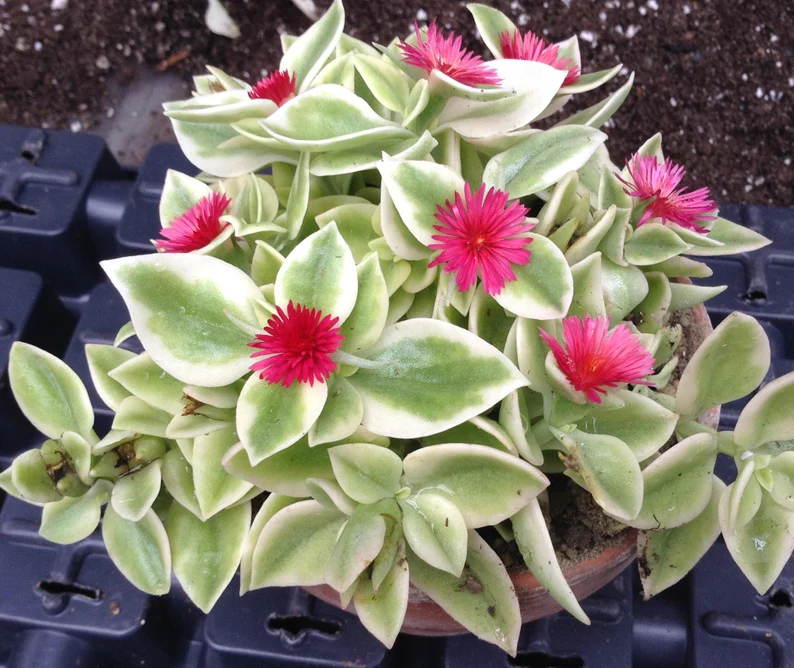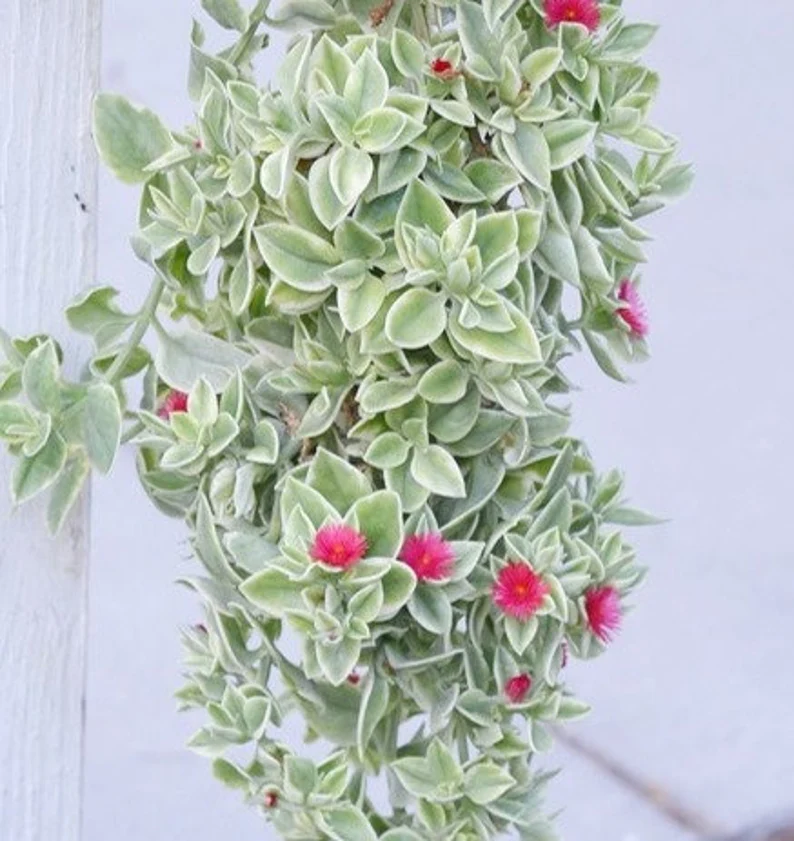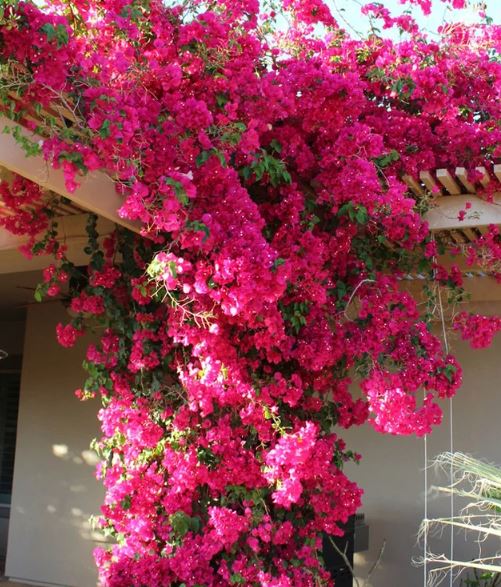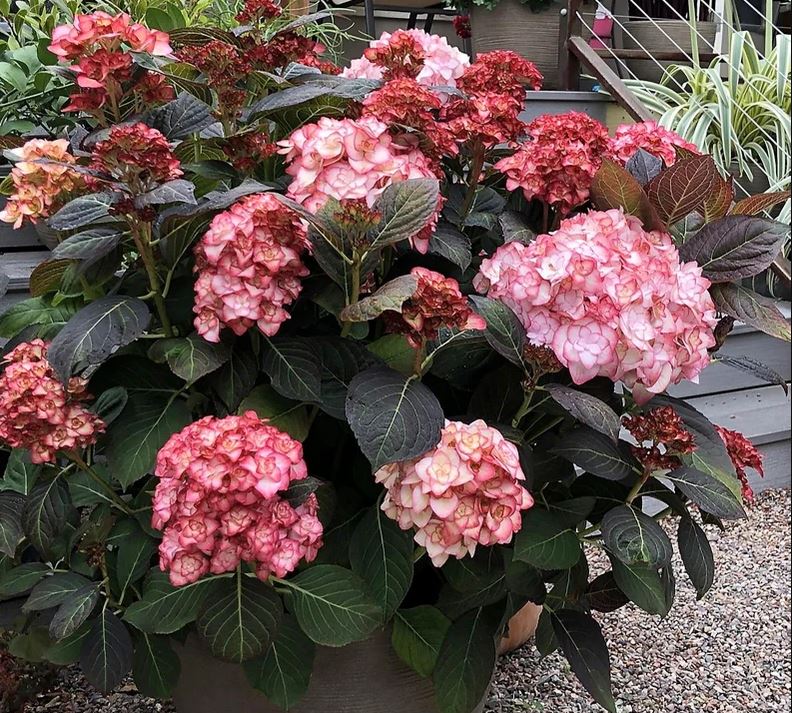
What is the Baby Sun Rose?
Baby Sun Rose, also known as heart-leaved ice plant or Aptenia cordifolia, is a species of succulent plant in the Aizoaceae family. This is a low-growing, groundcover plant that is native to South Africa. It has heart-shaped leaves and produces small, pink or magenta flowers in the summer.
White edges of the variegated leaves come to a point. They have thick succulent flesh. This protects them from long periods without water.
It is hardy in zones 9-11, and can tolerate a wide range of soil types. Prefers well-drained. Prefers full sun to partial shade, and it is drought-tolerant once established. Easy to care for after established.
Important to note that you want to water deeply but infrequently, and it should be allowed to dry out between watering. Fertilize with a balanced fertilizer every 4-6 weeks during the growing season, but it is not necessary. Deadheading baby sun rose spent blooms will encourage more flowering. Prune the plant back to the ground in late winter and Spring to promote fresh new growth.
This succulent is relatively pest and disease-free, but it can be affected by mealybugs and scale insects, so it should be monitored regularly. It can also be affected by powdery mildew and rust, so it should be grown in a location with good air circulation. This will help prevent disease.
Baby Sun Rose Care:
- Plant it in well-draining soil in a sunny spot with some protection from the hottest afternoon sun.
- Water it deeply but not too often, making the soil dry out slightly between watering.
- Fertilize it with a balanced fertilizer every 4-6 weeks during the growing season, but it is not necessary.
- Deadhead baby sun rose spent blooms to encourage more flowering.
- Baby Sun Rose care requires pruning to the ground in late winter or early spring to promote fresh new growth in the Spring.
- Protect the succulents from frost and freezing temperatures.
- Monitor for pests and diseases and take action as necessary, like mealybugs and scale insects can attack the plant, also powdery mildew and rust can affect it as well.
- Provide good air circulation around the plant to prevent fungal issues.
It is important to note that the Baby Sun Rose is drought-tolerant and can handle a wide range of soil types as long as they are well-drained, and it is hardy in zones 9-11. It is suitable for warm climates.
Where to Purchase?
You can buy this little beauty at our Esty shop. Happy Shopping!
Check Out Some Other Options:
Baby Sun Rose Care Indoors
To care for a baby sun rose indoors, it is important to provide the plant with bright, indirect sunlight. They can tolerate some direct sunlight, but too much can cause the leaves to scorch.
The plant should be kept in well-draining soil and watered when the top inch of soil is dry. It is also important to keep the humidity around the plant high, as sun roses come from tropical regions and prefer high humidity. This can be achieved by placing a tray of water near the plant or using a humidifier.
Fertilize every 2-3 weeks with a balanced fertilizer during the growing season. Sun roses are also susceptible to pests, so it is important to keep an eye out for any signs of infestation and take action as necessary.

Baby Sun Rose Propagation
There are several methods for propagating baby sun roses, but one common method is through stem cuttings. Here are the steps for propagating sun roses through stem cuttings:
- Select a healthy stem from an established sun rose plant. The stem should be about 4-6 inches long and have at least one set of leaves.
- Cut the stem just below a leaf node (the point on the stem where leaves grow) using a sharp, clean pair of scissors or a knife.
- Remove the leaves from the bottom half of the stem, leaving only a few leaves at the top.
- Dip the cut end of the stem in rooting hormone powder to encourage root growth.
- Place the stem cutting in a container filled with well-draining potting soil. You can also use a mixture of perlite and peat moss or sand.
- Keep the container in a bright, warm location with indirect sunlight.
- Keep the soil moist but not wet. You can cover the container with plastic wrap or a plastic bag to help retain moisture.
- Once roots have formed, usually in 2-4 weeks, you can transplant the new sun rose plant into a larger container or in the garden.
It’s important to note that some species of sun roses can also be propagated from seed, but it’s a bit more difficult as it requires stratification (a process of exposing the seed to cold and moist conditions for a period of time) before planting.





